 |
 |
 |
| |
Linkage and Anti-Retroviral Therapy Initiation Within 72-hours at a Ryan White-Funded FQHC in the Deep South in New Orleans
|
| |
| |
Fast Linkage to Care and HIV Control at New Orleans Ryan White Clinic
IDWeek2017/IDSA, October 4-8, 2017, San Diego
Mark Mascolini
All 66 people newly diagnosed with HIV infection in a New Orleans group got linked to care within 72 hours, and all 66 began antiretroviral therapy (ART) and had an undetectable viral load within 132 days.
In the United States, HIV disproportionately affects the Deep South. Across the country, New Orleans ranks second in HIV incidence. Health workers at Crescent Care in New Orleans, a Ryan White-funded clinic, developed a program to link newly diagnosed people to care and rapidly begin ART, aiming to start therapy within 72 hours of diagnosis.
People diagnosed with HIV at area testing sites are guided by a full-time patient navigator, who sets up an appointment with an HIV provider within 72 years. Providers confirm the HIV diagnosis, draw samples for lab evaluation, establish each person's readiness to start ART, and gives patients a 30-day supply of Ryan White-funded tenofovir alafenamide/emtricitabine (TAF/FTC) plus dolutegravir--a regimen chosen to meet the potential challenge of transmitted resistance. Providers can opt for a different regimen. Reviewing all initial labs within 48 hours, the provider schedules a follow-up appointment within 21 to 28 days.
This analysis included newly diagnosed people 18 or older with at least two lab data points and diagnosed from December 2016 through July 2017. Of the 66 study participants, 48 (73%) were men, 16 (24%) women, and 2 (3%) transgender. Thirty-five people (53%) were black, 20 (30%) white, 1 (1.5%) biracial, and 6 (9%) Hispanic. Median age stood at 29 years. Thirty-seven people (56%) reported sex between men as their HIV risk factor, 25 (38%) sex between men and women, and 3 (5%) injecting drugs. Forty people (61%) had a sexually transmitted infection at HIV diagnosis. While 47% had health insurance, 53% did not.
All 66 people got linked to care within 72 hours of HIV diagnosis, 35% within 12 hours, 35% within 24 hours, 14% within 48 hours, and 17% within 72 hours. Sixty-four people started TAF/FTC plus dolutegravir, while 2 started those three drugs plus darunavir/cobicistat. Median initial CD4 count measured 413 (range 8 to 1265) and median viral load 42,350 copies (range (430 to over 10 million).
Among 71 people who initially contacted a linkage navigator,* 66 (93%) reached a viral load below 200 copies within 130 days. Median time to viral suppression stood at 30 days (range 14 to 132). Most people (55%) attained viral suppression by day 30, 77% by day 60, and 94% by day 90. The proportion with health insurance rose from 47% at the initial visit to 82% during follow-up.
The New Orleans team plans to compare these people to a matched historical group to assess time to viral suppression. Follow-up will continue to gauge retention in care and sustained viral suppression.
*One got linked to another center and reached an undetectable viral load, 2 were linked but had no follow-up, and 2 were never linked.
Reference
1. Halperin J, Holm P, Butler I, Conner K, Van Sickels N. Linkage and anti-retroviral therapy within 72-hours at a Ryan White-funded FQHC in the deep South. IDWeek2017/IDSA. October 4-8, 2017. San Diego. Abstract 1421.
-----------------------
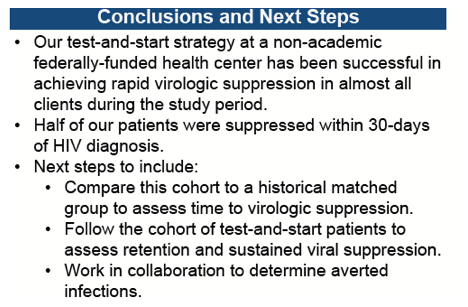
Linkage and Anti-Retroviral Therapy Initiation Within 72-hours at a Ryan White-Funded FQHC in the Deep South
Jason Halperin, MD, MPH, Pam Holm, BA, Isolde Butler, MD, MPH, Katie Conner, MPH, and Nicholas Van Sickels, MD
CrescentCare, New Orleans LA
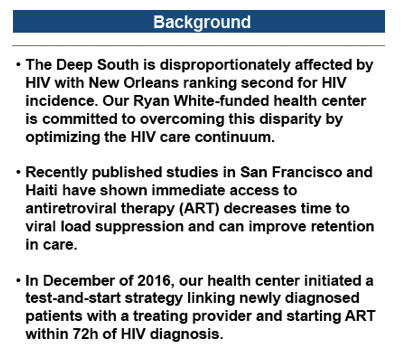
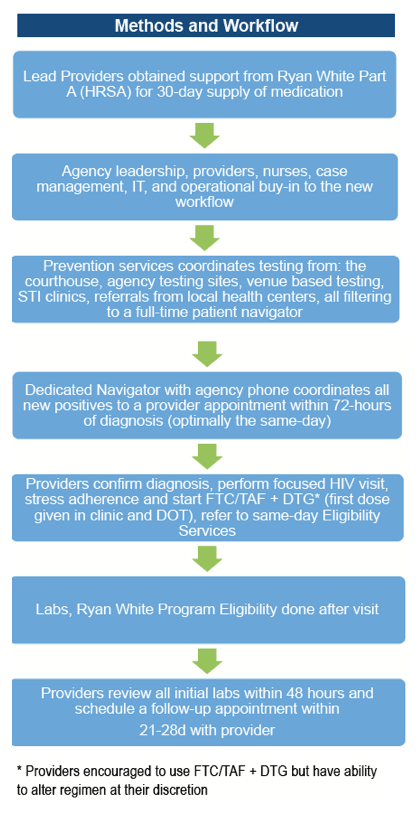
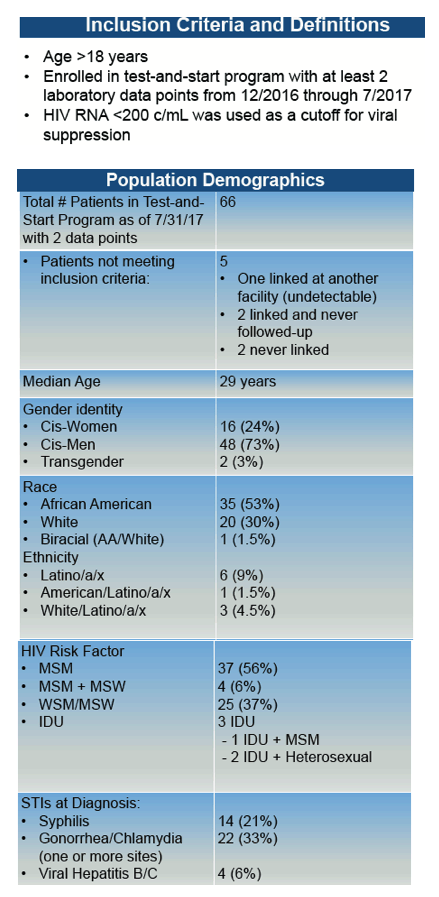
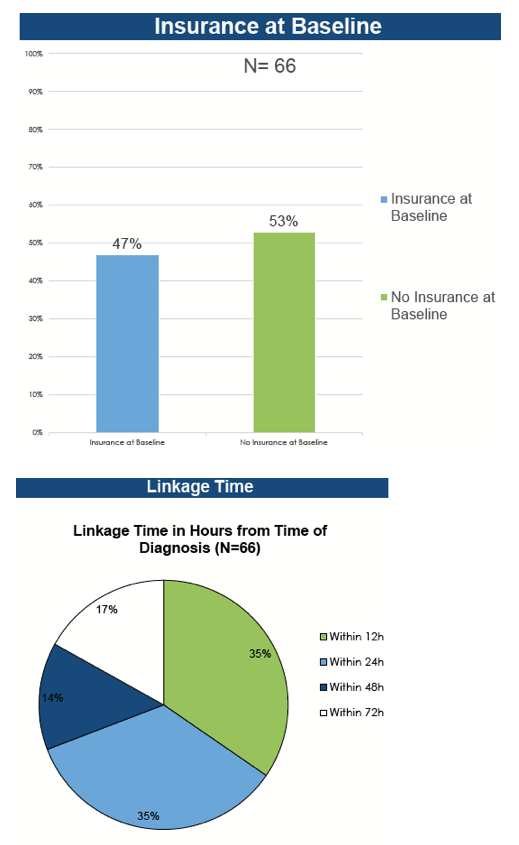
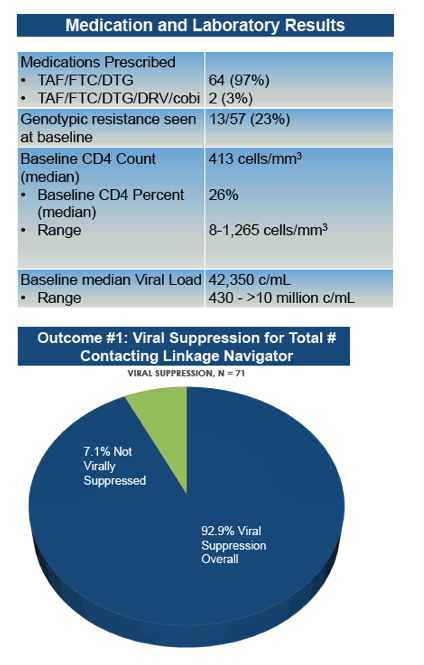
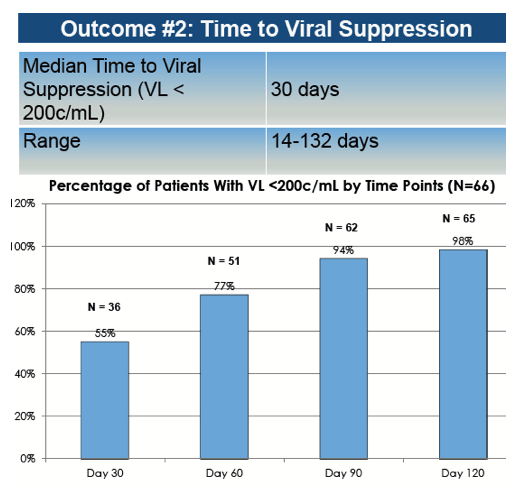
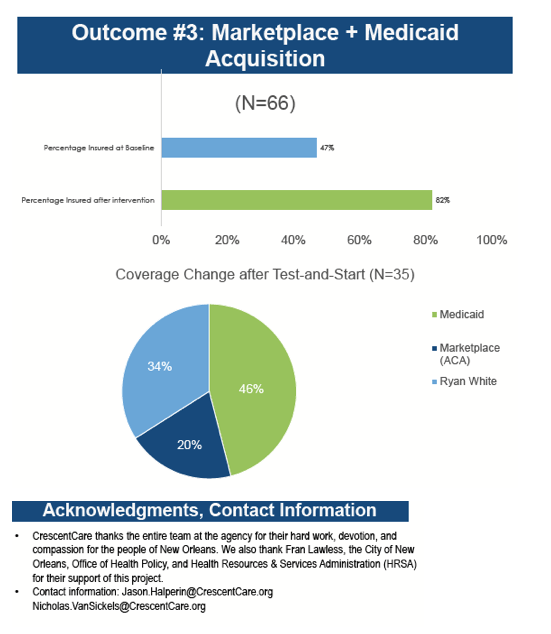
|
| |
|
 |
 |
|
|